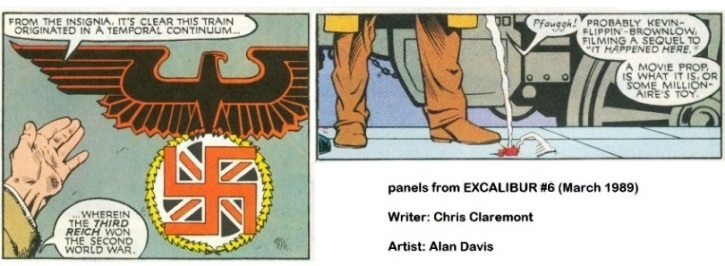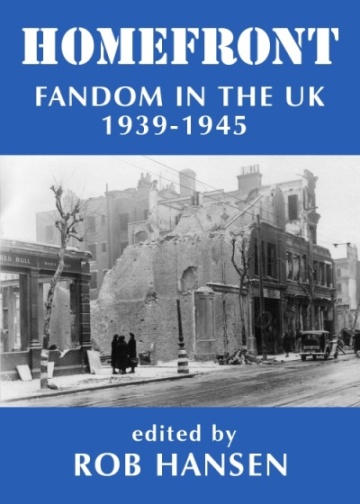BEYOND FANDOM - additional notesBOOKS Other works of fanhistory are referred to throughout. These can be found here, with ebook versions being free to download:
BOSSES' SONGBOOK (chapter 15) As well as those mentioned in the book, SF fans Shel Deretchin and Dick Eney also contributed songs. Internal illustrations were by Trina Robbins who was then with Art Castillo and using his name, though they never actually married. The first link below is to an article by Boyd Raeburn about the session he taped at the Riverside Dive.
New York fan Deretchin, who died young, is almost certainly the Shel in this account in Terri Thal's autobiography of how she and Dave Van Ronk first met:
I was 17 and at a party in a huge apartment on Riverside Drive with a zillion large rooms. Most of the people there were science fiction fans - this was my first experience with 'sci fi fandom.' A young man named Shel had been patting my hand, insisting that we go to a bedroom to "experiment." It was clear to me that Shel wasn't looking for sex but wanted me to smoke grass [...] In re Van Ronk and SF, Elijah Wald notes that:
He remained deeply enamored of SF/Fantasy to the end, with a large collection. His all-time favorite writer in that world was Fritz Leiber, a taste I never acquired, but whom he would defend against anyone in any genre. CIA PILOT (chapter 20) Art Wilson's fanzines can be found here:
LESBIAN PIONEER (chapter 4) There's much more information about Tigrina on this website, and also about the informer the FBI had in the Los Angeles Science Fantasy Society while she was a member.
MANHATTAN PROJECT (Foreword) At the top of this article is a photo taken in 1945 of J. Robert Oppenheimer and the other physicists who were working on the atomic bomb at Los Alamos. The two at the end - Victor Weisskopf and Richard Dodson - have connections to SF and to fandom. The first is slight - Victor Weisskopf is the great-Uncle of Toni Weisskopf, the current publisher of Baen Books - but not so Richard Dodson to whom E. E. 'Doc' Smith confided his frustrations as a writer, Clark Ashton Smith discussed spirituality and weird fiction, and Julius Schwartz introduced to fanzines. In 1932, Dodson was one of the first subscribers to THE TIME TRAVELLER, a candidate for first fanzine. We know this about Dodson from his correspondence, which is freely accessible at the University of Idaho, link below. My thanks to Mike Saler and Curt Phillips for bringing this to my attention.
NAZI OCCUPATION MOVIE (chapter 17) This is better known than I realized as witness this scene from a comicbook where a regular train departs from Edinburgh but something else arrives in London:

NUCLEAR BOMBER PILOT Dave Jenrette was a US fan in Britain with the USAF during the late 1950s. He attended the 1957 Eastercon and given that he wrote of setting off for the con from East Raynham, was almost certainly based at nearby RAF Sculthorpe. As noted in wikipedia, "by 1957, hosting 10,000 personnel it was the biggest United States Air Forces in Europe (USAFE) base in Europe". According to Ron Bennett in MIMOSA #26 (December 2000, ed. Dick & Nicki Lynch):
Dave was posted over here at the time, flying nicely primed nuclear bombs around in the skies for SAC. His colleagues were shipped home on a regular basis with nervous breakdowns. He hailed from Florida and had been well-known in fandom under the surname of Howard, the adjustment being made when he joined the Air Force and the authorities insisted on his original name, rather than that under which he'd been brought up after his mother had remarried. This pleased his wife. "Anyone can be called Howard," Rusty said, "but how many people are called Jenrette?" PACIFISTS (chapter 2) POLITICAL SCIENTIST (chapter 29) Rainer Eisfeld's many books and essays:
POLITICAL SPEECHWRITER No, your copy of the book isn't missing a chapter; this is someone who almost made the cut but didn't. Frank Robinson (see BIXELSTRASSE) was an editor, vintage magazine collector, and novelist (several of his books were turned into movies). He was also the speechwriter for murdered San Francisco politician Harvey Milk. He played himself in the eponymous movie biopic starring Sean Penn. Unfortunately Robinson's autobiography Not So Good a Gay Man: A Memoir (2017) makes no mention of fandom.
RIVERSIDE DIVE (chapter 15) The Riverside Dive lasted barely a year. UK fan and pro Ken Bulmer and his wife Pamela visited New York in 1955 during the former's TAFF trip. This was before fans moved into the Dive, but it still features in Ken's report:
I believe everyone knows of the reputation that Central Park has. You just don't go near there after dark. [...] There were six of us. We were going downtown to our apartment and skirting the Park. We'd been warned many times that if we contemplated an evening stroll then to steer clear of the Park; but the devil got into the four guys with us, and they suggested we might like to see the notorious Park by night. There were Danny Curran, Art Saha, Bill Donaho and Dick Ellington, plus Pamela and me. We said nervously "Yes."WORLD WAR TWO (chapter 3) i) The 'Hump'
ii) Forry's tribute to his fallen brother:
iii) Howard DeVore's war - more Sgt Bilko than Sgt Rock:
More here (click on cover):

|
|||
|
